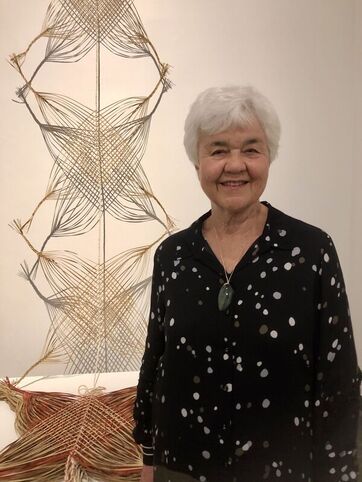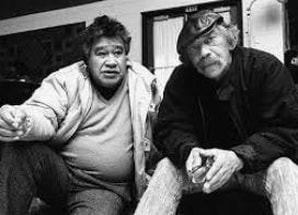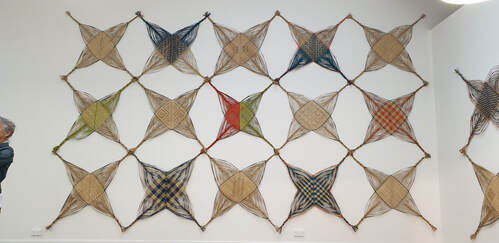The Church Rawene
Menu
Creative footsteps
The Far North of Aotearoa has both gifted and been gifted with some of the most significant, thought-provoking and life-shaping poets, painters, potters, ceramicists, writers, philosophers and intellects in Aotearoa New Zealand.
Creative Footsteps celebrates these creatives and their contribution to Aotearoa as a rich pataka with a unique creative and cultural identity.
Our hope is that the Church will play a part in keeping alight the flame of inspiration and will support its residents to follow in the footsteps of their creative contemporaries and predecessors.
It also raises and activates the issues and opportunities for creatives as they make their way in the creative world.
Creative Footsteps celebrates these creatives and their contribution to Aotearoa as a rich pataka with a unique creative and cultural identity.
Our hope is that the Church will play a part in keeping alight the flame of inspiration and will support its residents to follow in the footsteps of their creative contemporaries and predecessors.
It also raises and activates the issues and opportunities for creatives as they make their way in the creative world.
 Maureen Robin Lander, MNZM (born 1942 in Rawene) is of Ngāpuhi (Te Hikutu subtribe) and Irish, Scottish and English descent. Until recently, she lived and worked in Ōmāpere, joining with artists and weavers in the small communities around Hokianga, where her ancestors lived and her mother grew up. She has led the way in raranga maori fibre art for many years through her teaching and guidance of young artists. In 2020 Maureen worked with the Mata Aho Collective to create a work Atapō which won the 2021 Walters Prize, Aotearoa New Zealand's prestigious contemporary art award. Maureen Lander was first introduced to muka (flax fibre) by noted weaver Diggeress Te Kanawa in 1984, when she went to stay several times with the senior artist at Ohaki Maori village, near Waitomo and learned the basics of preparing materials and techniques such as whatu (finger twining). Her end of year installation at Elam, titled Te Kohanga Harakeke ('The Flax Nest') included a structure covered in milled flax in the shape of a massive inverted nest, which sheltered a young harakeke (flax) plant. Lander's first public art exhibition was as part of the group exhibition Karanga Karanga at the Fisher Gallery (now Te Tuhi Centre for the Arts, Pakuranga, Auckland) in 1986. She describes her three decades working with muka as a 'journey of discovery'. In a recent artist statement Lander said: “I was seduced by the beauty and magic of muka. My first public installation in 1986 – E kore koe e ngaro he kakano i ruia mai i Rangiatea in the Karanga, Karanga exhibition – featured whenu (warp threads) and aho (weft threads) that I had carefully prepared to make my first korowai. Instead, I suspended them in an ethereal cloud-like formation over a swirl of flax seed. Her contemporary work draws inspiration from the kākahu (cloaks) and woven taonga (treasures) in museums in New Zealand and overseas. Though much of her work is a response to weaving arts, Lander seldom actually weaves – at least, in the works she exhibits in gallery spaces. Rather, she uses, often to astonishing effect, the materials used in traditional Maori weaving and dying. These include pingao and feathers, but most of all harakeke (New Zealand flax) in all its forms – its leaves, its handsome flower and seed heads, the seeds and muka (the fine silky fibre obtained from the leaves). With these she combines materials from the Western world. Maureen researched and taught Māori fibre arts for many years at Auckland University. In 2002, she was awarded a Doctorate in Fine Arts from Auckland University - and an inaugural Māori Academic Excellence Award, Fine Arts, Music, and Performing Arts, Te Tohu Toi Ururangi, sponsored by Toi Māori. In 2021 No.1 Gallery, Parnell, was honoured to exhibit Maureen’s significant installation Flat Pack Whakapapa, its final destination after travelling to 8 centres. Here Maureen explains why it was important to bring the exhibition to Rawene: "I was born in Rawene. My mother, my grandmother, my great-grandmother and many more generations of my tupuna were also born in Hokianga. So when I think about whakapapa it always brings me back into Hokianga –a place to return to. The exhibition Flatpack Whakapapa also started life in Hokianga. Many of the korari (flax) leaves used to create it were harvested from my garden in Omapere, where I was living at that time. But for the large collaborative wall installation, Kitset Whanaungatanga, it was all about ‘whanau’ (in a contemporary sense) so my Pa te Aroha weaving ‘whanua’ came to help me. We harvested bundles of korari that had been split up from the pa korari at the marae and then replanted along the banks of the Whirinaki river. It was at the mouth of this same river that my ancestors, Te Rangahau and John Leaf had once lived. Their descendants must be amongst one of the largest whanau around (in a traditional kinship sense). Flatpack Whakapapa was first exhibited in 2017 at the Dowse in Lower Hutt, Wellington. Since then it has been on a journey around the country and has finally come home to Hokianga for the final exhibition of its four-year tour. "
0 Comments
 Hone Tuwhare (1922 - 2008) and Ralph Hotere (1931 -2013) were sons of the Hokianga and great friends. Hone, described as one of our greatest literary figures, was born in Kokewai, south east of Kaikohe, and Ralph, one of Aotearoa NZ's most significant contemporary artists, grew up in Mitimiti. They worked together at times, with Hotere using words from Tuwhare's poems in his paintings and illustrating some of Tuwhare's published collections. Tuwhare, in turn, wrote a poem in honour of his friend. 'Hotere' begins: When you offer only three vertical lines precisely drawn and set into a dark pool of lacquer it is a visual starvation; and even though my eyeballs roll up and over to peer inside myself, when I reach the beginning of your eternity I say instead: hell let's have another feed of mussels Janet Hunt's bio of Hone, published in 1998, is, up to that time a thorough and engaging read. Illustrated with his poetry and contemporary and historical photographs, 'this book looks at the life of Hone Tuwhare, boilermaker, political activist, husband, father and writer. https://www.nzepc.auckland.ac.nz/kmko/06/ka_mate06_hunt.asp Vincent O'Sullivan's recently published biography of his friend Ralph is also a lucid account which honours his life and work. Vincent held a residency at the Michael King Writers' Centre in 2009 in order to work on this important biography. 'He faced significant obstacles in the writing of it which saw it temporarily consigned to an archive box. We congratulate him on the completion of it against all the odds. https://writerscentre.org.nz/the-dark-is-light-enough.../ |
 RSS Feed
RSS Feed

